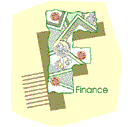Consider the situation of a newly married couple. They have some savings but also have substantial credit card outstanding. They are planning to buy an apartment. How should they go about it? Should they pay off a portion of credit card outstanding first and then go for a low interest home loan? If they decide to go for a home loan immediately, would they be able to repay their debt in a timely manner? Can they finance their credit card outstanding with a lower cost source of capital? Each of these decisions will affect the capital structure-the mix of debt and equity-of the couple.
 Ensuring an optimal capital structure and securing the financing sources with the least cost of capital is as important, if not more, for corporate entities as it is for individuals. The ability of an organization to perform well in the market depends on the efficiency of its capital structure. In simple terms, the composition of the total capital of a company constitutes its capital structure. Here, total capital is the net funds available to the company after it fulfils its current liabilities.
Ensuring an optimal capital structure and securing the financing sources with the least cost of capital is as important, if not more, for corporate entities as it is for individuals. The ability of an organization to perform well in the market depends on the efficiency of its capital structure. In simple terms, the composition of the total capital of a company constitutes its capital structure. Here, total capital is the net funds available to the company after it fulfils its current liabilities.
Debt and equity are two major components of the total capital of companies. Debt is the amount owed for borrowed funds from sources such as individuals, banks, or other financial institutions. Equity is the ownership interest in a firm including equity share capital, share premium, preference share capital, free reserves, and surplus profits. The proportion of debt and equity (leverage) in the capital structure differs across companies. The capital structure also varies according to the industry and the market situation that the company is operating in. For example, the average capital structure of European firms is significantly different than that of the American firms.
So, how can a firm optimize its capital structure?
The basic aim of optimizing capital structure is to select that proportion of various forms of debts and equities that maximizes the firm’s value while minimizing the average cost of capital. This, however, is easier said than done. Though the topic has been extensively researched, there is no single formula or theory that conclusively provides the optimal capital structure for all firms. Some of these theories are given below.
The Net Income (NI) approach to an optimal capital structure states that the total value of the firm changes with a change in the financial leverage. The NI approach holds true under certain assumptions. For example, the NI approach assumes that the cost of debt is lower than the cost of equity. Therefore, an increase in the proportion of debt in the capital structure would result in a decrease in the firm’s average cost of capital. A lower cost of capital would result in an increase in the value of the firm. The NI approach can be used to determine a firm’s optimum capital structure where the value of the firm is highest and the cost of the capital is lowest.
The Net Operating Income (NOI) approach states that the proportion of debt and equity in the firm’s structure does not have any impact on the firm’s value or its cost of capital. The NOI approach assumes that while the cost of debt is constant for all levels of leverage, the cost of equity increases linearly with financial leverage. This increase is explained by the increase in the financial risk to the firm as it increases the proportion of debt in its capital structure. Cost of equity increases because the shareholders expect a higher rate of return to cover the risk of increase in leverage. Therefore, according to the NOI approach, there cannot be any optimum capital structure for a firm.
The Modigliani and Merton Miller theorem is perhaps the most widely accepted capital structure theory. In 1958, Franco Modigliani and Merton Miller established two propositions for the relation between a firm’s capital structure, its market value and cost of capital. They both won the Nobel Prize for their contribution to corporate finance. The first proposition, also referred to as the debt irrelevance theorem, states that the value of a firm is unaffected by its capital structure. The second proposition states that the required rate of return on equity increases as the firm’s debt equity ratio increases. This exactly offsets the less expensive funds represented by debt.
It should be noted that these capital structuring theories operate under various assumptions, such as no taxes, rational investors, perfect competition etc. However, the actual marketplace is quite different. Besides impacting the financials of the firm, capital structure of a firm also has intangible effects, particularly regarding investors’ perceptions of the firm.
Still, the knowledge of these basic capital structuring concepts will help a manager utilize the market conditions to the firm’s advantage.